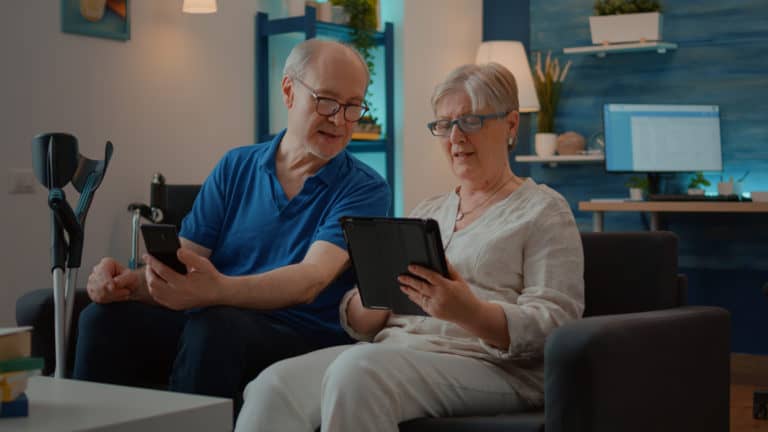Technology Bringing Social Determinants of Health to the Forefront
VBP programs achieve greater value by addressing social determinants of health
THE VBP Blog

According to the World Health Organization (WHO), social determinants of health (SDoH) are the conditions in which people are born, grow, work, live, and age, and the wider set of forces and systems shaping the conditions of daily life. Think of them as non-medical factors that shape conditions of life and influence health inequities.
The New England Journal of Medicine states that social determinants of health influence 80 to 90 percent of patient outcomes. With so much at stake, it is essential that they are addressed in care plans with incentivization through value-based payment programs.
We’ve covered social determinants of health in previous blogs, including how CalAIM is incorporating SDoH, as well as the benefits of healthcare at home when it comes to addressing them. In this blog, we will take a deeper look at how technology is being utilized to improve the incorporation of SDoH into care plans.
States Incorporate SDoH Into Care Plans
Although it is currently being reassessed for the best way to move forward, RISE PA is a collaborative tool for care coordination. The interactive online platform was a care coordination system for providers and featured a closed-loop referral system to report outcomes. Pennsylvanians can also search and obtain meaningful information and contacts to find and access the services they need.
It is designed to allow providers and residents to look at social determinants of health like child care, transportation, food security, and more to ensure that all aspects of care are being addressed. Even though the program is currently on hold, other states are taking similar approaches.
Illinois Governor JB Pritzker recently announced the launch of the Children’s Behavioral Health Transformation Initiative. This program will build a coordinated response between state agencies to support children with behavioral health needs. Through the initiative, DHS and five other state agencies will partner with community-based organizations to establish and support the federal 988 crisis line, in addition to providing services to individuals needing behavioral health services.
New York is another state that created an online system that provides access to a referral network. New York MATTERS is a statewide addiction referral network. It features an electronic referral platform hosted by the NY State Department of Health. Through New York MATTERS, patients with opioid use disorder can be referred from ERs, correctional facilities, OB/GYN offices, and inpatient units to community-based clinics.
Technology Helping Providers Incorporate SDoH Into Care Plans
Texas is also making strides in this department. In 2021, South Texas Physician’s Alliance underwent a thorough review of social determinants of health and how they can be incorporated into healthcare plans but found it was difficult to find referrals for social needs and navigate care coordination.
The South Texas Physician’s Alliance then implemented LeadingReach, an SDoH referral technology, that streamlines care coordination and connects patients to the care and assistance they need. Through the tool, providers can search for specific social services that address a reported social determinant of health. They can then send the referral, check whether the patient has accessed the assistance, and track the entire process from start to finish.
Another tool called findhelp.org, formerly known as Aunt Bertha, can connect individuals to food assistance, get them help paying bills, and find referrals to socials services like housing and transit. The COVID-19 brought services like findhelp.org to the forefront as many people saw life throw them a curveball, like the loss of a job, and weren’t sure where to turn. By allowing them to seek help and address social determinants of health before they became a larger issue, you can reduce the risk of these individuals falling into a situation where their health suffers.
These are all clear examples of how technology is helping advance care coordination and ensuring that SDoH can be incorporated into care plans to increase overall health outcomes.
Advocates Perspective
It is encouraging to see social determinants of health and health equities being given the consideration they deserve. One of the biggest challenges to incorporating SDoH into care plans is a lack of knowledge, coordination, and referral tracking. Though technology, consumers can get the support they need to address unmet nonmedical needs that can adversely impact their health. It is important that continued emphasis is placed on SDoH and that states and health plans utilize technology to ensure that they are properly integrated into care plans to improve overall health outcomes.
Onward!
Share This Blog!
Get even more insights on Linkedin & Twitter

About the Author
Fady Sahhar brings over 30 years of senior management experience working with major multinational companies including Sara Lee, Mobil Oil, Tenneco Packaging, Pactiv, Progressive Insurance, Transitions Optical, PPG Industries and Essilor (France).
His corporate responsibilities included new product development, strategic planning, marketing management, and global sales. He has developed a number of global communications networks, launched products in over 45 countries, and managed a number of branded patented products.

About the Co-Author
Mandy Sahhar provides experience in digital marketing, event management, and business development. Her background has allowed her to get in on the ground floor of marketing efforts including website design, content marketing, and trade show planning. Through her modern approach, she focuses on bringing businesses into the new digital age of marketing through unique approaches and focused content creation. With a passion for communications, she can bring a fresh perspective to an ever-changing industry. Mandy has an MBA with a marketing concentration from Canisius College.